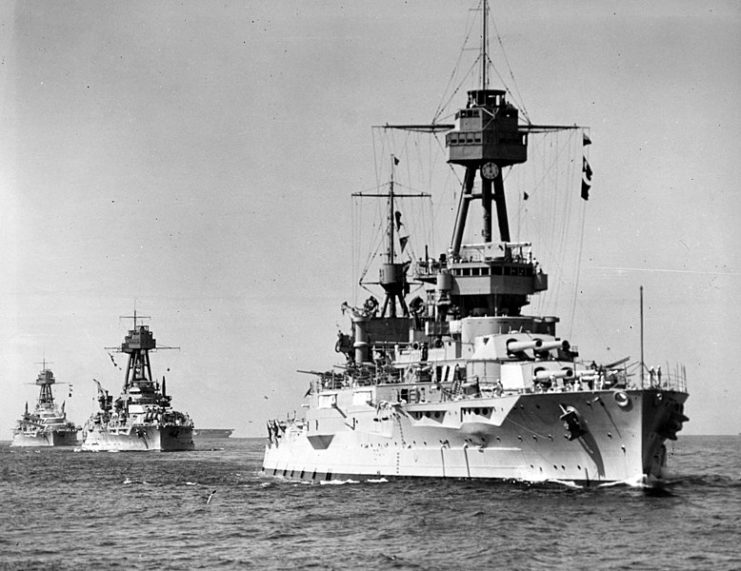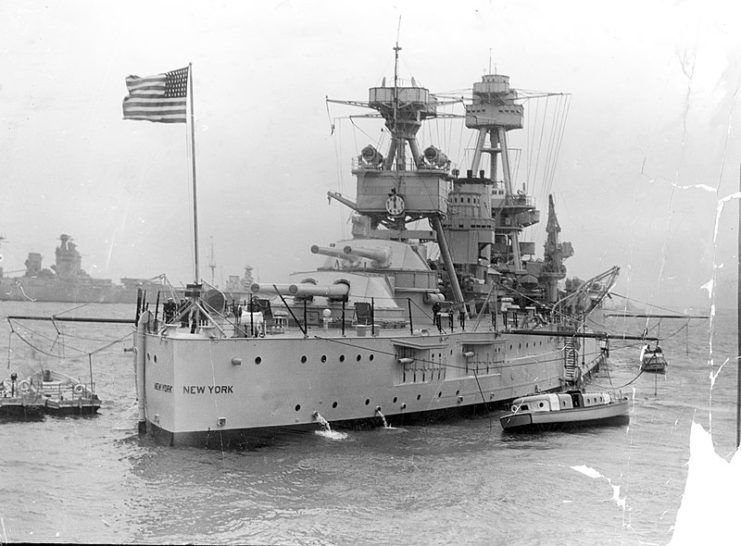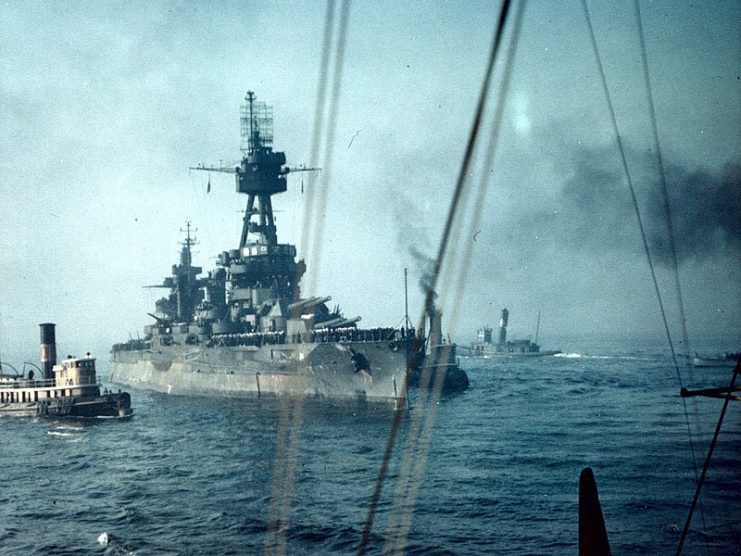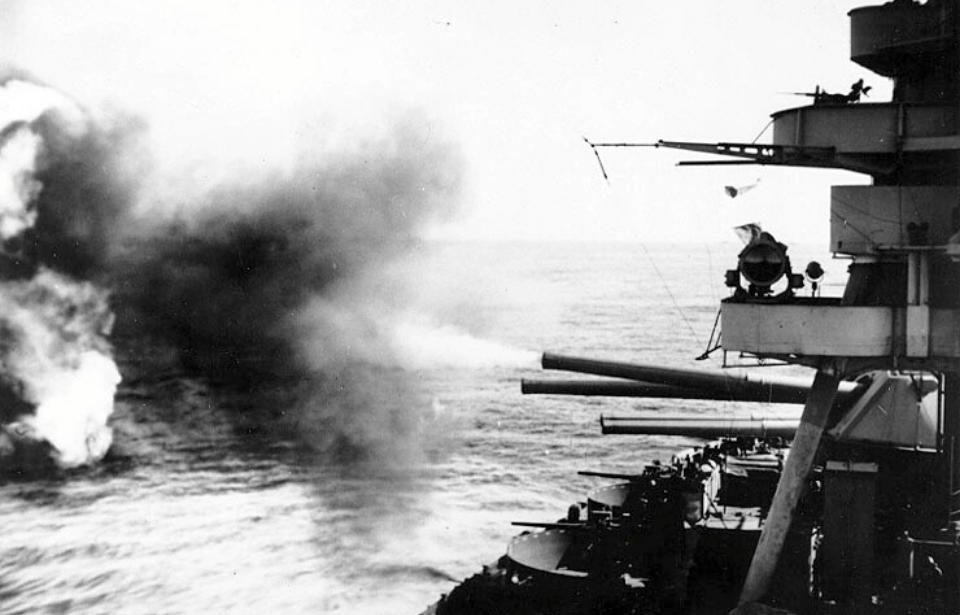The USS New York (BB-34) was a US Navy battleship and the lead vessel of her class. Named after the state of New York, she was designed to be the first vessel to carry a 14-inch/45-caliber gun. She entered service in 1914 and first actively served during the US occupation of Veracruz.
Following more than three years of operations off the East Coast and in the Caribbean, she set sail across the Atlantic Ocean to join the British Grand Fleet, and served as the flagship of US battleships in the 6th Battle Squadron for the remainder of World War I.
The USS New York (BB-34) accidentally collides with a German U-boat

It was during an escort mission that the USS New York first came into contact with a German U-boat. She was leading a fleet of battleships into the Pentland Firth on October 14, 1918 when she was badly damaged in an underwater collision. Two blades broke off of one of her propellors, significantly reducing her speed, and there was damage to the starboard side.
Service during the interwar period

By 1919, the USS New York had transited through the Panama Canal to the Pacific Ocean, where she was stationed for the next decade and a half. It was during this time that she underwent some serious modernization. Between 1925-27, she received new oil-fired boilers, heavier deck armor, anti-torpedo bulges along her hull and up-to-date gunfire control mechanisms.
The USS New York (BB-34) during the Second World War

The USS New York was part of Neutrality Patrol operations in the Atlantic at the opening of World War II. As the US drew closer to conflict in 1941, she was employed to help with the Allied Occupation of Iceland and in escorting convoys. When America did become a combatant, she continued her convoy activities.
